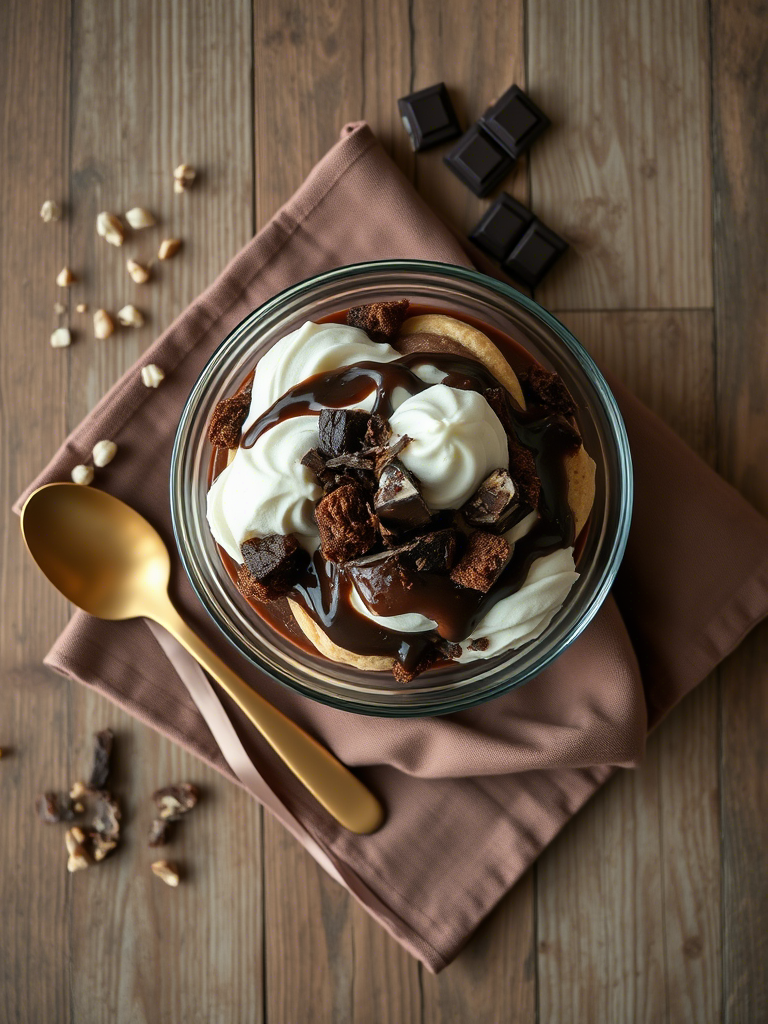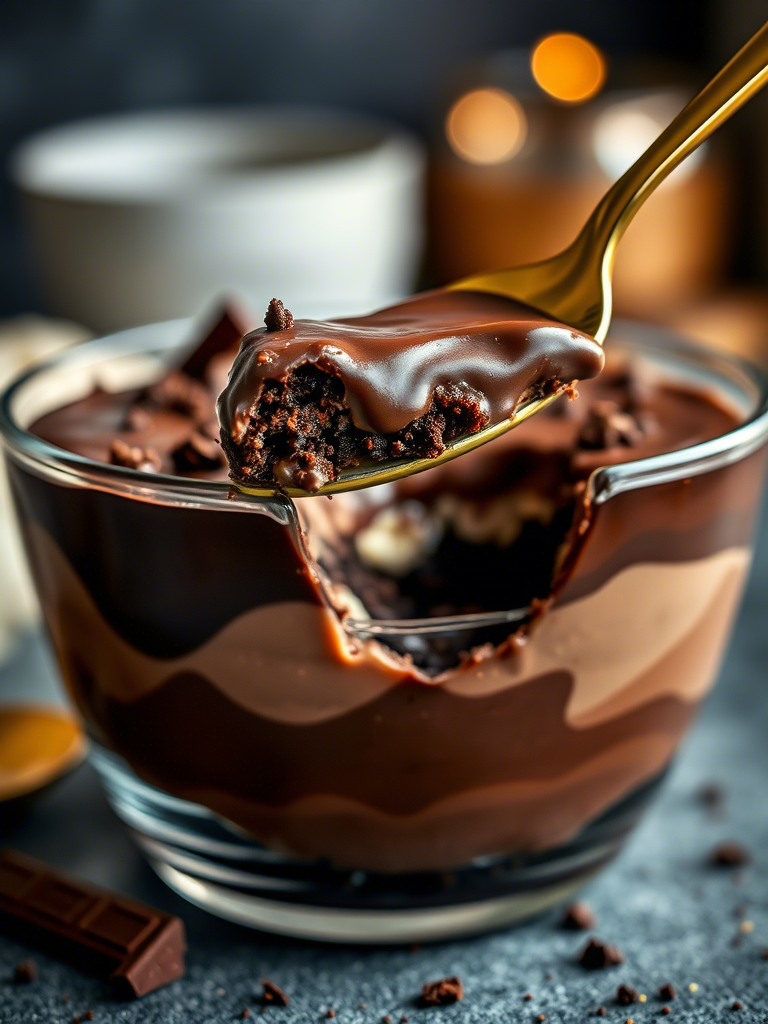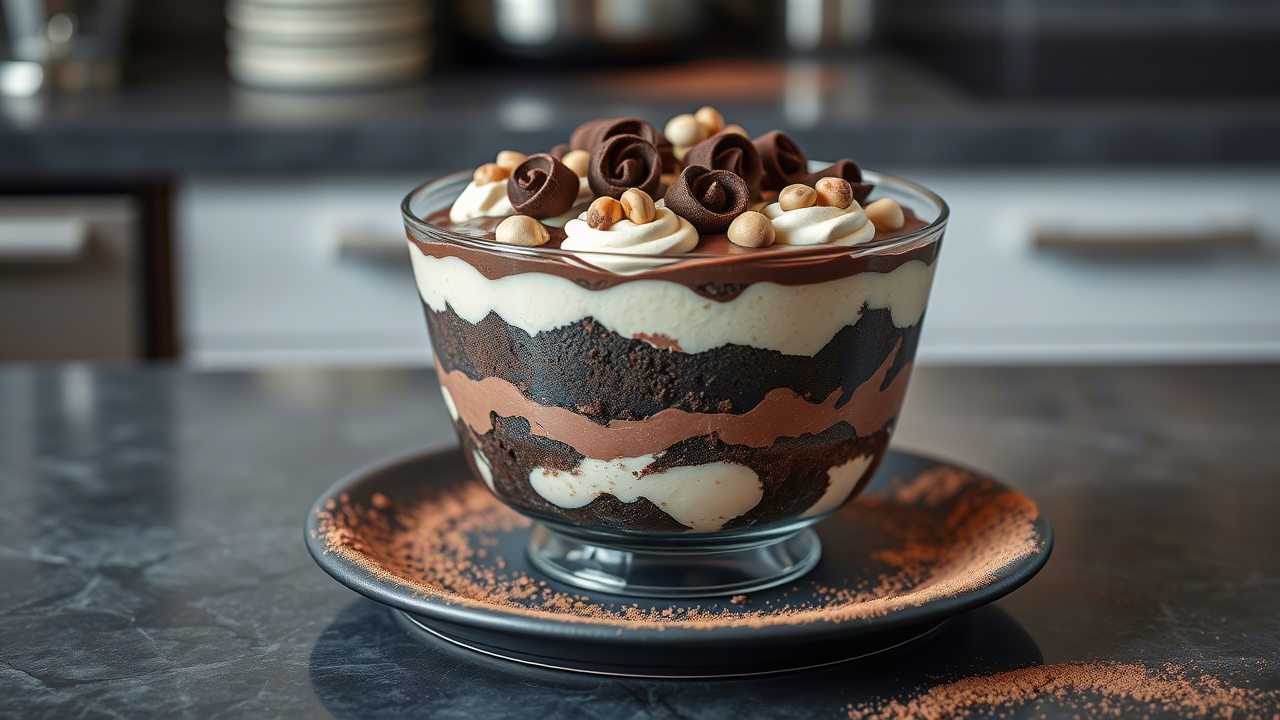There’s something about a Chocolate Cheesecake Trifle that shuts people up mid-bite. It’s not just dessert—it’s a quiet revelation in a glass dish. The silky tang of cream cheese, the deep velvet of dark chocolate, a moist cake crumble, all stacked like edible architecture—it’s indulgence you can spoon.
This isn’t your grandma’s pudding bowl. Or maybe it is, if grandma moonlighted as a pastry savant.
This article explores the technical finesse behind crafting a chocolate cheesecake trifle that’s not just “good,” but wow-people-slow-down-and-savor good. Whether you’re plating for high-end catering, a hotel banquet, or just elevating your personal baking brand, this breakdown hits every layer—literally.
What Even Is a Trifle?
Let’s get something straight. A trifle isn’t just a dessert; it’s a layered technique. Originating from England, it traditionally features sponge cake soaked in sherry, layered with custard and cream. But today’s variations? They break all the rules—and rightly so.
A chocolate cheesecake trifle fuses multiple textures:
- Rich chocolate sponge or brownies
- Whipped cheesecake mousse
- Chocolate ganache or pudding
- Crunchy bits (cookie crumbs, nuts, brittle)
- Sometimes fruit, but purists may scoff
You’re not just stacking ingredients. You’re engineering flavor contrast, mouthfeel shifts, and visual appeal.
Why Chocolate Cheesecake Works So Dang Well in a Trifle
You need balance in a trifle. Sweet on sweet is just… tired. The slightly tangy cream cheese in a cheesecake mousse cuts the richness of chocolate like a knife through velvet. It keeps things grounded.
Here’s what happens chemically:
- Cream cheese’s slight acidity counters the fat-sugar punch of chocolate.
- When whipped with heavy cream and sugar, the mousse holds air and behaves like silk.
- Brownie or chocolate sponge acts as the ballast, absorbing flavors but staying tender.
It’s not just taste—it’s structure.

Building the Base: The Cake Layer
You’ve got options here, but don’t wing it.
Brownies
Fudgy. Dense. Holds up under mousse. Ideal for rich, almost sinful trifles. Make sure they’re cool before cubing—warm brownies crumble too much.
Chocolate Sponge
More delicate. Useful if you want a softer trifle with less heft. Great for big-batch prep since it layers cleaner.
Store-bought cake
Yeah, you can use it. But expect loss of texture and that weird preservative aftertaste. Professionals don’t fake freshness unless they’re desperate.
Expert tip: Add espresso powder to your batter. It won’t taste like coffee—it’ll just make the chocolate taste… more chocolate.
Cheesecake Mousse: The Soul of the Dish
This part makes or breaks the whole dessert. Too stiff and it sits like paste. Too loose and it puddles into soup.
Here’s the ratio that just works:
- 16 oz full-fat cream cheese
- 1 ¼ cups powdered sugar
- 2 tsp vanilla extract
- 1 ½ cups heavy cream (cold)
Beat cream cheese first. Then the sugar. Then the cream—separately. Fold whipped cream into the sweetened cheese. Folding—not mixing—retains air.
Do not use low-fat cream cheese. It’ll break. It’ll weep. And no one wants soggy mousse tears in their trifle.
Chocolate Pudding or Ganache: Let’s Talk Luxury
There’s a spectrum here. It depends on how intense you want to go.
Ganache
Simple: just heavy cream + chopped chocolate. 1:1 ratio gives a thick, spreadable layer. You can even chill it slightly to thicken.
Pudding
Use real egg yolks and cook it right. Or make a stabilized pastry cream with cornstarch. Instant pudding works too, but—let’s be honest—it always kinda tastes like plastic hope.
Chef’s cheat: Add a splash of bourbon or Kahlua to your pudding. Just enough to make people ask, “Wait, what is that?” in the best possible way.

Texture Layer: Nuts, Cookies, Surprise Crunch
You need a crunchy component to keep this thing from turning into edible pudding slush. Think:
- Crushed pecan praline
- Toffee bits
- Chocolate cookie crumble
- Toasted hazelnuts
- Salted caramel shards (oh yes)
This is where you add contrast. Not just texture—but tempo. Your spoon shouldn’t glide through like yogurt. It should crack, scoop, and sink.
Layering Like a Pro: Not Just Dump and Go
Trifles are deceptively simple. A novice thinks “just stack it.” A pro understands ratios and flow.
Layer Order (suggested):
- Brownie or sponge base (cut in even cubes)
- Cheesecake mousse (piped for precision)
- Pudding or ganache (drizzle, not dump)
- Crunchy bits (sparingly)
- Repeat until you hit the top
Always end on mousse + chocolate garnish. Never leave raw cake on top. It looks like someone gave up halfway.
Use a clear trifle dish or dessert glasses. Show off the layers like edible strata. Let diners see what they’re about to dive into. It builds anticipation.
Flavor Variations That Actually Work
Trifles are versatile, but not everything pairs well. Here’s what elevates the base profile without wrecking it:
Cherry
Cherry compote between layers gives a Black Forest vibe. Use sour cherries. Not the candy-red ones that belong in a cocktail.
Orange
A light layer of orange zest in the mousse or a thin marmalade swirl adds a citrus lift. Think Terry’s chocolate orange… but grown up.
Peanut Butter
Swirl peanut butter into your ganache. Or make a peanut butter mousse as a secondary layer. Go bold.
Just don’t add mint. It fights with the cheesecake and usually wins—badly.
Storage, Shelf Life, and Service Tips
Here’s the part that separates the home cooks from pros: logistics.
- Make your components ahead: mousse holds for 2 days, cake up to 5, ganache a week.
- Assemble no more than 6 hours before service for max texture integrity.
- For plated service, go with mini glasses or shot cups. Avoid plastic if possible—it cheapens the look.
Do not freeze a completed trifle. The mousse will split and thaw like wet foam.
Industry Insight: Trifles in Catering and Restaurants
The trifle is making a comeback in upscale catering and bistros—partly for its cost-efficiency, partly for its visual drama.
Why it works:
- You can prep parts in bulk.
- Zero waste: use up day-old brownies or leftover ganache.
- Customizable for diet needs (gluten-free cake, vegan mousse, etc.)
- Elegant portion control when served in glassware
Restaurants are charging $12–18 for trifle parfaits. It’s a margin-friendly item if built smart.
Pro tip: When scaling for 50+ servings, whip the mousse in 20% batches. Over-whipping a full bowl will deflate before your last layer hits the dish.
Common Mistakes Even Experts Make
- Overloading layers. More isn’t better—it’s muddy.
- Using sweet-on-sweet-on-sweet. You need contrast.
- Poor layering—sloppy spooning wrecks presentation.
- Not chilling long enough. Trifles need at least 2–4 hours to set properly.
- Using wet fruit without draining. Soggy layers = sad bite.
Fix these, and your trifle becomes a signature item. A dessert people remember.
The Evolution of Trifle in Modern Cuisine
Trifles are no longer dusty British hand-me-downs. They’re reinvented:
- As deconstructed plating in Michelin-starred spots
- In fusion desserts (think matcha cheesecake trifles with sesame crumble)
- Even in jar desserts for boutique bakeries and food trucks
The trifle’s comeback is driven by its Instagrammable symmetry and build-your-own potential. It’s visual storytelling in a dish. People don’t just eat it—they watch it happen.
Final Thoughts and Takeaways
A chocolate cheesecake trifle isn’t just a dessert—it’s a strategy. It’s how you use up odds and ends from the kitchen and turn them into something guests take photos of. It’s how you teach flavor contrast without saying a word.
Remember:
- Use structure: mousse + cake + contrast
- Keep flavors sharp, not syrupy
- Prioritize clean layering and chill time
- Don’t be afraid to innovate—just do it on purpose
Whether you’re prepping for an event, a restaurant menu, or a late-night craving you’ve got to honor—this trifle delivers every time. And it doesn’t whisper indulgence. It yells it.
And hey—if someone doesn’t like it? More for you.
FAQs
What is a chocolate cheesecake trifle made of?
It typically includes chocolate cake or brownie, cheesecake mousse, chocolate ganache or pudding, and a crunchy layer like nuts or cookie crumbs.
Can I make chocolate cheesecake trifle ahead of time?
Yes, you can prep all components in advance and assemble it up to 6 hours before serving.
What’s the best cake base for a chocolate cheesecake trifle?
Fudgy brownies or chocolate sponge work best for structure and flavor balance.
How do I keep the trifle from getting soggy?
Use fully cooled, sturdy cake and avoid overly wet fruit or sauces.
Can I freeze a chocolate cheesecake trifle?
No, freezing breaks the mousse texture and ruins the overall consistency.
How long will a chocolate cheesecake trifle last in the fridge?
It stays good for about 2–3 days, though texture is best within the first 24 hours.
Can I serve it in individual cups or jars?
Yes, individual portions look great and make for easier serving and better presentation.
What can I use instead of ganache or pudding?
You can use chocolate pastry cream, mousse, or a stabilized whipped ganache.
Is it okay to add fruit in the layers?
Yes, but use well-drained fruit like sour cherries or thin marmalade to avoid excess moisture.
Why did my cheesecake mousse turn runny?
You probably overmixed or used low-fat cream cheese; always fold whipped cream gently.

Mariana is a passionate home cook who creates delicious, easy-to-follow recipes for busy people. From energizing breakfasts to satisfying dinners and indulgent desserts, her dishes are designed to fuel both your body and hustle.
When she’s not in the kitchen, she’s exploring new flavors and dreaming up her next recipe to share with the Foodie Hustle community.

